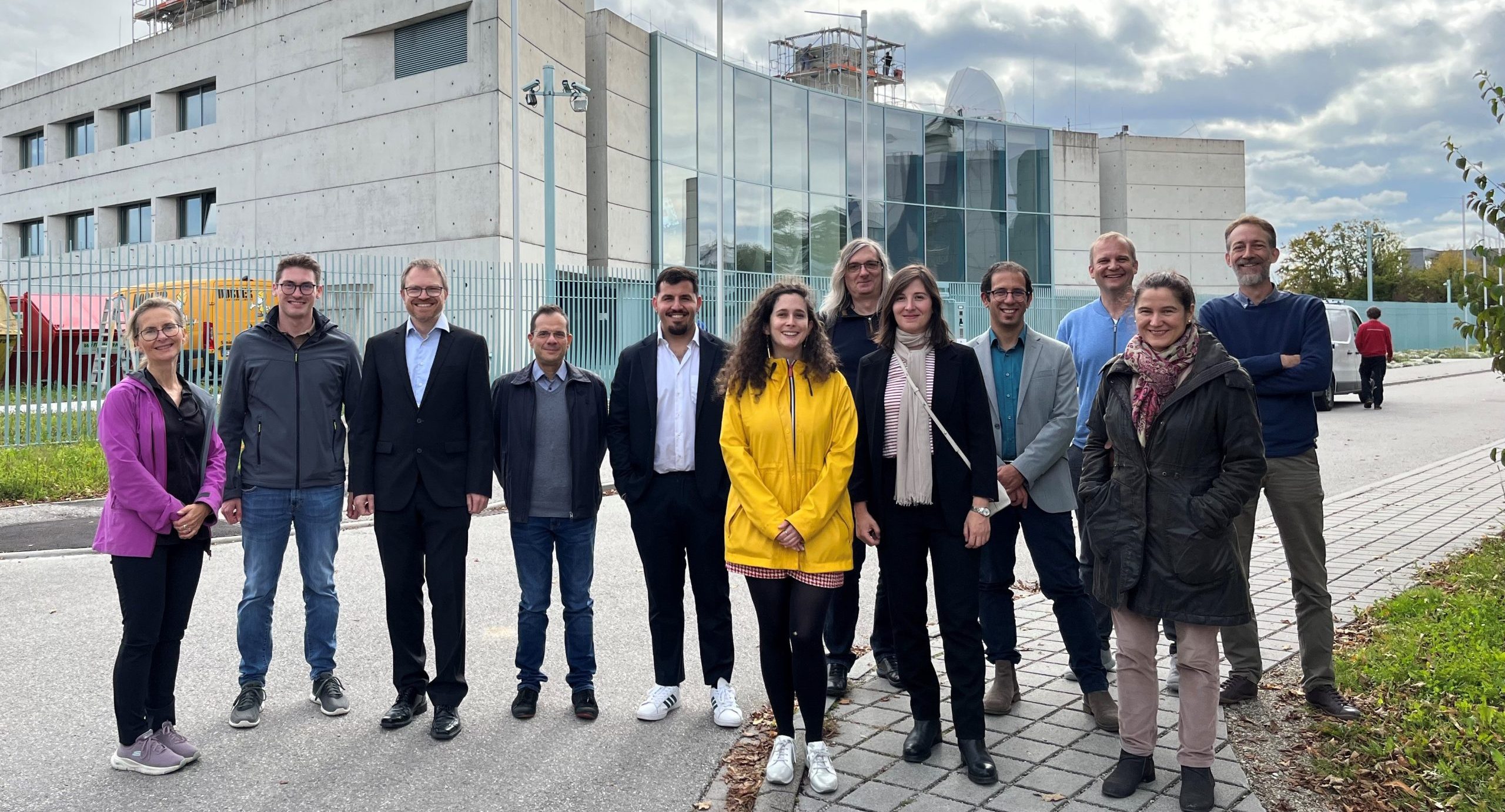WG-28 Ground Based Augmentation Systems: Call for interest in GLASS (GLS approaches using SBAS)
With the GLASS (GLS Approaches using SbaS) concept, GLS equipped aircraft will be enabled to conduct RNP approaches down to LPV minima. Publishing of corresponding RNP approaches is in line with the the implementation regulation for performance-based navigation (PBN IR, Regulation (EU) 2018/1048). With GLASS, RNP approaches can be extended to a wider range of users already equipped with GLS capability. GLASS proposes the usage of a GAST A GBAS based on SBAS corrections and integrity parameters combined with a locally stored final approach segment database. Therefore, GLASS can support the objectives of the PBN IR by facilitating a strategic shift towards harmonised, performance-based navigation, with the aim of saving costs, increasing airspace capacity, enhancing safety and reducing reliance on legacy navigation infrastructure. However, currently no standards for such an SBAS-to-GBAS relay as GLASS are existent.
WG-28 will shortly propose an update to their Terms of Reference to move forward with standardisation of the GLASS concept.
If you are interested in the standardisation of the GLASS concept, please contact the responsible Technical Programme Manager Mark Watson. The next meeting will be held virtually on 30 October.
WG-44 Aeronautical Databases is Seeking Experts in Aerodrome Mapping / Terrain and Obstacle Data Management
EUROCAE WG-44 and RTCA SC-217 have recently published ED-76B/DO-200C ‘Standards for Processing Aeronautical Data’ and ED-77B/DO-201C ‘User Requirements for Navigational Data’. Both these documents have delivered significant updates to earlier versions.
WG-44 and SC-217 are now moving to update the following documents:
- ED-98C/DO-276C ‘User Requirements for Terrain and Obstacle Data’.
- ED-99D/DO-272D ‘User Requirements for Aerodrome Mapping Information’.
- ED-119C/DO-291C ‘Interchange Standards for Terrain, Obstacle and Aerodrome Mapping Data’.
The document update focuses on aligning with related EUROCAE/RTCA standards and supporting new applications such as Digital NOTAMs, SVS, and EVS. It introduces enhanced data features like text notes and runway starter extensions, and addresses emerging needs including Engine Out SID procedures, standard taxi routes, and A-SMGCS. The revision also includes a review of obstacle collection surfaces (e.g., OLS and heliports), capture rules, and data quality requirements, while taking into account ICAO SWIM developments and reference models like AIXM and AIRM.
WG-44 is seeking new experts with particular experience in aerodrome mapping and terrain and obstacle data management, from the perspectives of data originator, data management and application suppliers and users (e.g., A-SMGCS, Flight Procedure Design).
The next meeting for WG-44 and SC-217, when the work on these documents will begin, will be from 2 to 5 December in Frankfurt, Germany.
For further information, please contact the responsible Technical Programme Manager Alex Milns.
Contribute to WG-124’s New Document on Spectrum
EUROCAE WG-124 and RTCA SC-242 are currently seeking additional expert participants to support the development of ED-XXX “Spectrum Guidance for Developers of Standards for Aviation Wireless Systems”.
This joint Working Group is focused on ensuring that the radio frequency (RF) characteristics of aeronautical Communications, Navigation, and Surveillance (CNS) systems are designed to use spectrum resources efficiently while maintaining the necessary safety margins. The Guidance Document will provide best practices to help the aviation industry work collaboratively with non-aviation spectrum users and ensure the safe integration of new technologies, an essential step toward advancing the aviation ecosystem.
The group is especially looking for experts involved in the design of RF avionics equipment. Their input will ensure that the guidance reflects a practical engineering perspective, especially in terms of spectrum compatibility and technical feasibility. The ultimate goal is to deliver a document that is both actionable and implementable by RF systems engineers across the industry.
If you are interested in this Working Group, please contact the responsible Technical Programme Manager Mark Watson.
New WG-134 DME Interrogators: Calling All Experts
The ED-54 ‘Minimum Operational Performance Requirements (MOPR) for Distance Measuring Equipment (DME) interrogator (DME/N and DME/P) operating within the Radio Frequency range 960 to 1215 MHz’ was published in January 1987 and is still in use in 2025. The standard does not reflect the technological evolution of equipment whose performance is higher today than the minimum required by the MOPS.
Recognising those advances will allow the DME range data consumers, in particular Flight Management Systems (FMS), to take benefit and credit from the better DME performance. This is of particular importance in the context of widespread Global Navigation Satellite System (GNSS) interference and urgent need of ensuring that DME is an adequate means to elaborate area navigation (RNAV) and required navigation performance (RNP) solutions.
The creation of this new WG also gives the opportunity to explore options to facilitate future improvements to DME, in particular regarding spectrum efficiency, like enhanced DME (eDME) currently under study in SESAR Making I-CNSS a Reality (MIAR) project WP3.3.
The first deliverable of this Working Group will be an update of ED-54 to facilitate the critical objective of making DME navigation a suitable alternative to GNSS. The intent for the first phase is to reflect the performance and characteristic of today’s state-of-the-art DME interrogators. The WG should evaluate the need for extended scope in a second phase.
The kick-off Meeting for WG-134 is scheduled for 28 November at the EUROCAE Offices in Paris, and is also open to non-members, who will be invited to join EUROCAE if they wish to continue their participation in the Working Group.
For further information, please contact the responsible Technical Programme Manager Mark Watson.

